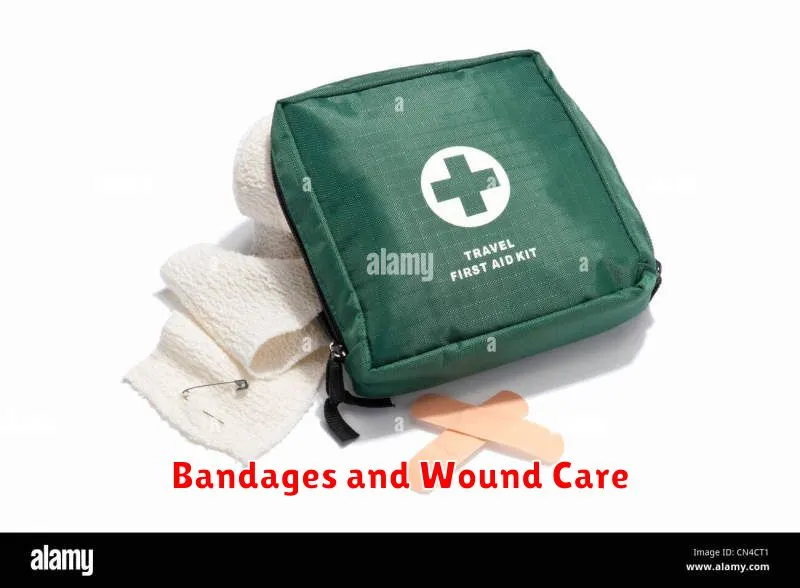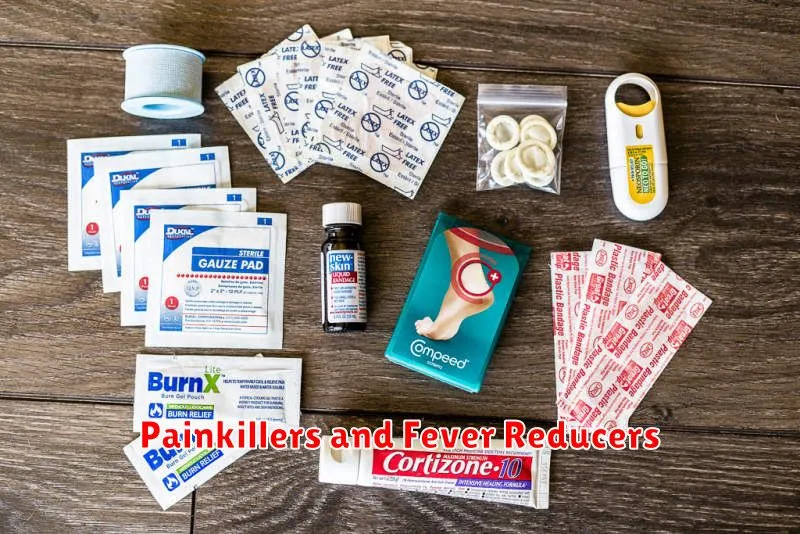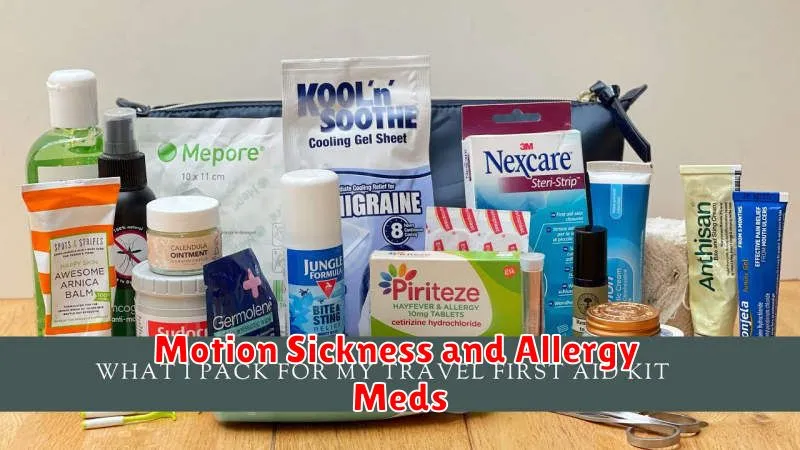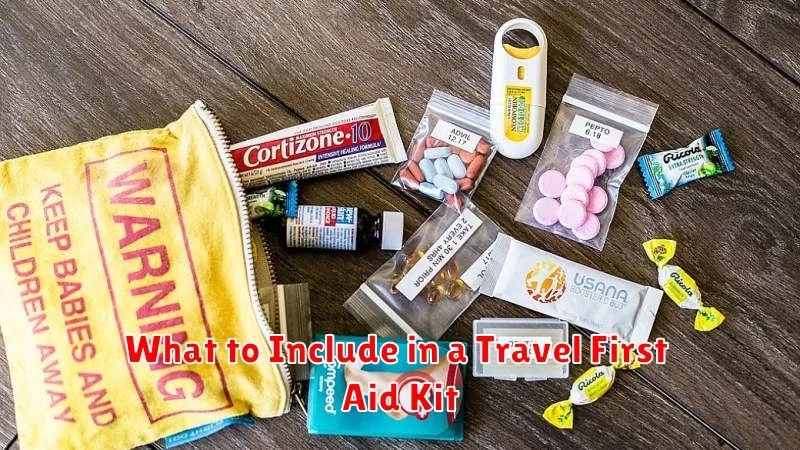Traveling can be an enriching experience, but unforeseen circumstances like minor injuries or illnesses can disrupt your adventures. A well-stocked travel first aid kit is an essential item for any traveler, whether embarking on a weekend getaway or a long-term expedition. Being prepared for common medical issues can provide peace of mind and allow you to address minor health concerns quickly and efficiently. This comprehensive guide will detail exactly what to include in your travel first aid kit, ensuring you are equipped to handle a range of situations and continue your travels with minimal disruption. From essential medications to wound care supplies, learn how to assemble a kit tailored to your specific travel needs and destination.
Navigating the world of travel first aid can feel overwhelming, but it doesn’t have to be. This article will break down the process of building a personalized first aid kit for travel, categorizing essential items and providing clear explanations for their use. Whether you’re backpacking through Southeast Asia, exploring European cities, or camping in the American wilderness, understanding the key components of a travel first aid kit is crucial. Stay informed and be prepared for common travel ailments by following our expert advice on assembling a comprehensive first aid kit for your next journey.
Why First Aid Matters While Traveling
A travel first aid kit is more than just a collection of bandages and antiseptic wipes; it’s a critical resource that can significantly impact your travel experience. Unforeseen circumstances, from minor cuts and scrapes to more serious injuries or illnesses, can occur anytime, anywhere, especially when you’re away from the comforts and familiarity of home.
Having a well-stocked first aid kit allows you to address minor medical issues promptly, preventing them from escalating into larger problems. This is especially crucial when traveling to remote locations or areas with limited access to medical facilities. Being prepared can provide peace of mind and allow you to enjoy your travels with confidence.
Furthermore, a first aid kit enables you to provide immediate care while waiting for professional medical assistance, if necessary. Those crucial first few minutes can make a significant difference in someone’s recovery. Being equipped to handle common travel-related ailments like motion sickness, allergies, or traveler’s diarrhea can alleviate discomfort and allow you to continue your journey with minimal disruption.
Basic Health Items to Pack
This section outlines essential health-related items for your travel first aid kit, focusing on managing common ailments and minor injuries. Packing these basics can help you address common travel health issues effectively.
Medications
Include pain relievers such as ibuprofen or acetaminophen for headaches, muscle aches, and fever. Pack an antidiarrheal medication like loperamide. Antihistamines can be useful for allergic reactions and insect bites. If you have any personal prescriptions, ensure you have an adequate supply for your trip.
First Aid Supplies
Adhesive bandages in assorted sizes are essential for covering minor cuts and scrapes. Pack antiseptic wipes for cleaning wounds. Include gauze pads and medical tape for larger injuries. A small pair of scissors and tweezers are also handy additions.
Other Essentials
Carry a digital thermometer to monitor fever. Motion sickness medication or bands can be helpful for those susceptible. Hand sanitizer is crucial for maintaining hygiene, especially when soap and water are unavailable.
Bandages and Wound Care

Bandages and wound care supplies are essential for treating minor injuries on your travels. Pack a variety of sizes and types to be prepared for different situations.
Essential Bandages
- Adhesive bandages (Band-Aids): Various sizes for small cuts and scrapes.
- Gauze pads: Sterile pads for covering larger wounds.
- Roller bandages: For securing gauze and providing support.
- Triangular bandage: Versatile for slings, splints, or pressure dressings.
Other Wound Care
Include antiseptic wipes or spray for cleaning wounds. Medical tape helps to secure bandages. Blister treatment products can prevent discomfort and infection.
Painkillers and Fever Reducers

Packing pain relievers and fever reducers is crucial for managing common travel ailments. These medications can provide relief from headaches, muscle aches, and fevers, which can occur due to changes in climate, activity levels, or illness.
Recommended options include acetaminophen (Tylenol) or ibuprofen (Advil, Motrin). Choose the medication that best suits your needs and follow the dosage instructions printed on the packaging.
Consider packing both types of medication, as they work through different mechanisms. Acetaminophen is effective for pain and fever, while ibuprofen also offers anti-inflammatory properties beneficial for injuries like sprains or strains.
Ensure you pack an adequate amount for the duration of your trip, plus a few extra doses in case of unexpected delays.
Motion Sickness and Allergy Meds

Motion sickness can significantly detract from travel enjoyment. Pack non-drowsy motion sickness medication in your first aid kit. This allows you to address symptoms proactively, especially if traveling by car, boat, or plane. Consider including acupressure wristbands as a drug-free alternative.
Allergies can flare up unexpectedly when traveling, especially to new environments with different pollen and other allergens. Pack your usual allergy medication, whether it’s an antihistamine for hay fever or an epinephrine auto-injector for severe allergic reactions. If you have severe allergies, ensure your medication is easily accessible and that your travel companions know how to administer it in case of emergency.
Hand Sanitizer and Disinfectant
Maintaining proper hygiene is crucial while traveling, especially when access to soap and water is limited. Hand sanitizer provides a convenient way to quickly cleanse your hands. Choose a hand sanitizer with at least 60% alcohol content for effective germ killing.
In addition to hand sanitizer, consider packing disinfectant wipes. These can be useful for cleaning surfaces such as airplane tray tables, hotel room doorknobs, and restaurant tables. Opt for wipes that are effective against a broad range of bacteria and viruses.
Emergency Contacts and Copies
While we all hope for smooth travels, unforeseen circumstances can arise. Being prepared for emergencies is crucial, and that includes having essential contact information readily available.
Create a list of emergency contacts. Include family members, close friends, and your personal physician. Ensure these contacts are individuals who can be reached quickly and can make decisions on your behalf if necessary.
In addition to contacts, make copies of essential documents. This includes your passport, driver’s license, health insurance card, and travel itinerary. Keep one set of copies with you, separate from the originals, and leave another set with a trusted contact back home.
Consider storing digital copies securely on your phone or in cloud storage for easy access.
Other Smart Additions for Safety
Beyond the basic medical supplies, consider these additions to enhance your travel safety:
Personal Safety Items
A whistle can be invaluable for attracting attention in emergencies. A small flashlight or headlamp is crucial for navigating in the dark or during power outages. Include a multi-tool with a knife, scissors, and other useful implements.
Environmental Protection
Sunscreen and insect repellent are vital, especially for tropical climates. Pack a small amount of duct tape for quick repairs or securing bandages. Consider a lightweight emergency blanket for warmth or shelter.

